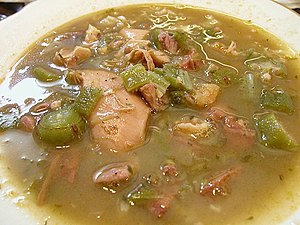First, here are some of the straightforward facts that she was operating with. When we cook, we either burn some fuel (natural gas, charcoal e.g.) or use electricity to heat our food. Electricity can heat food in a couple of ways: most electric heating elements are just a simple resistor (a material that resists electric current), which turns 100% of the electricity it resists into heat with theoretically perfect efficiency. All electric heating elements have the exact same basic efficiency, from your portable space heater to your hairdryer to your electric stove. Electricity can also be used (as in a pressure cooker) to pump hot steam into a contained space, which increases the temperature even more efficiently. This increase in efficiency is similar to the way that a geothermal heat pump heats a house more efficiently than an electric space heater. Burning anything to cook is less efficient, and also releases more carbon gas.
All of this, however, misses some important points about how we use our homes. The assumption is that the heat will be used to heat the food, and then be lost to the universe. After beginning my first winter in a place that actually gets cold, I realize that this is just not true at all. When the oven is running all day, the thermostat controlled home heating doesn't turn on. The point is, in the winter there is no such thing as 'waste heat.' And since my oven heats the house with the same efficiency as the built in heating system (the apartment has electric heat) there is no functional difference between one and the other. In fact, the oven is more efficient in a way, because the heat is being used for two purposes: first to heat the food and second to heat the home.
Back before the power grid and natural gas hookups, every home had one fire that ran more or less non stop and served every function that requires heat in the home. Over that fire, water was boiled and food was cooked. The fire provided heat for the home, light for that room, and a place for the family to gather all winter long. Today, we have a separate appliance for every function. An oven, a pressure cooker, a crock pot, a toaster oven, a fridge, freezer and heater, not to mention all of the various motors that we need (a blender or a mixer, e.g.), and our countless entertainment devices. All of these things consume energy and use it for one and only one purpose. When you start thinking in this way, it becomes obvious that the pressure cooker is not more efficient in the winter, because there is no "waste" heat going in to your home.
So then what do we do in the summer? When it is too hot for that extra heat to be useful, the issue is reversed. Then that waste heat is really wasteful, because it will cause your AC to work extra hard! So if it is really hot, chilling out with a cold dish is ideal. This is also just obvious when you think about it, summertime is when we want to eat salads and sandwiches and (some of us at least) gazpacho. We want cold food because we are hot. In the winter, when it is freezing outside, it is lovely to have baked goods, homemade soup, etc. all of which requires the oven and stove to be burning away all day long. This is a not a coincidence. When you go back to that one fire scenario above, people didn't want the fire burning all day and night when it was ninety degrees out, and they did want it when it was below freezing. In other words, our habits have been developed over centuries, and the recent innovation in technology has thrown us a little out of whack.
I am not a Luddite, I love technology. But sometimes our really advanced and clever solutions (like using electricity to make your house cold) cause us to forget the really simple solutions that we have been using forever (light linen clothes, cold food and drink). And sometimes those simple solutions are extremely satisfying.



















